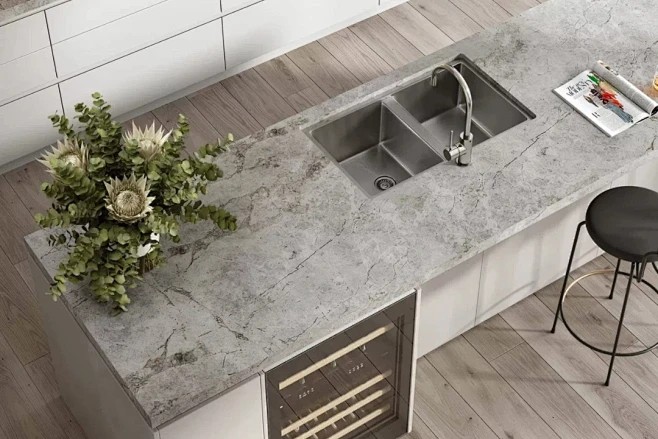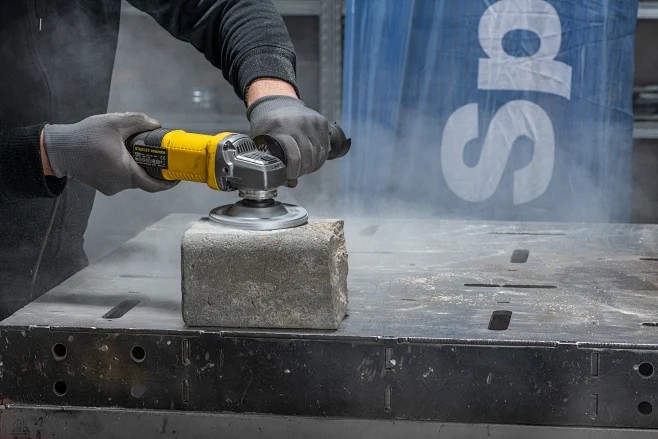
Granite Polishing Function: Decoration and Protection
Characteristics of Granite
Granite is a widely used stone with unique properties that make it a popular choice for architectural and interior design applications.

1. High hardness and stability
Granite is known for its exceptional hardness and stability, making it highly resistant to wear and deformation over time. This inherent durability ensures that granite surfaces maintain their integrity and visual appeal even in high-traffic areas and demanding environments. Granite's sturdy properties make it a reliable and durable material for a wide range of construction and design applications.
2. Resistant to penetration and corrosion
The contact area between granite particles is small and tightly combined, giving granite strong resistance to penetration and corrosion. This property makes granite ideal for surfaces exposed to moisture, chemicals, and other potentially damaging elements. Granite's inherent resistance to penetration and corrosion ensures its longevity and durability in a variety of indoor and outdoor environments.
3. Natural beauty and exceptional weather resistance
Granite displays naturally beautiful textures and colors, adding a touch of elegance and sophistication to architectural and design projects. The unique patterns and tones of granite surfaces contribute to its visual appeal and versatility in design applications. In addition, granite is not affected by natural factors such as sunlight, rain, sand, high temperature, etc., and has excellent weather resistance. This makes granite ideal for both indoor and outdoor applications, ensuring its longevity and visual appeal in different environments.
Granite Polishing Function

Granite polishing plays a key role in enhancing the beauty, durability, and functionality of granite, making it a popular and versatile material for a wide range of construction and design applications.
1. Decoration and beautification function
The process of grinding granite serves a vital decorative and beautifying function, transforming the material into a smooth, fine, high-gloss surface. Polished granite can be used on indoor and outdoor floors, walls, columns, countertops, sinks, sculptures, and other decorative elements to add a touch of elegance and sophistication to architectural and design projects. The wide variety of colors and intricate grain patterns of polished granite create a vibrant and visually appealing design. By using different cutting directions and angles, polished granite can create new and unique three-dimensional effects that enhance the visual appeal and aesthetic impact of indoor and outdoor spaces.
2. Protection function
In addition to its decorative effect, granite grinding also enhances the protective properties of the material, making it highly resistant to penetration, corrosion, and wear. The polishing process further enhances the waterproof, moisture-proof, wear-resistant, anti-scratch, anti-pollution, anti-oxidation, and other protective functions of granite. Therefore, polished granite can be used in indoor and outdoor building materials, floors, roads, bridges, tunnels, and other public facilities, and has excellent fire prevention, anti-theft, anti-skid, environmental protection, and other advantages. The protective features of polished granite ensure its longevity and durability in a variety of construction and design applications, making it a reliable and resilient material for a variety of projects.
How to Polish Granite?
Material preparation for granite polishing
The process of polishing granite requires specialized equipment and accessories, including motors, grinders, polishers, water grinders, and diamond polishing pads. These tools are essential for achieving a smooth, shiny finish on your granite surface. Choosing the right materials and equipment based on the specific requirements of your granite and the desired finish is crucial.
Preparation before polishing
Before starting the polishing process, the granite surface must be prepared to ensure the best results. Preparation involves cleaning the surface to remove dirt and impurities to create a clean, smooth base for the polishing operation. In addition, applying a layer of stone glue to the surface of the stone helps to secure it to the grinder, ensuring stability and precision during the polishing process.
Polishing techniques and precautions
The actual polishing process involves the use of a diamond polishing pad and water to achieve a smooth and shiny finish on your granite surface. Polishing pads are carefully selected based on the specific requirements of the granite and the desired gloss level. Using water during the polishing process helps minimize heat and friction, ensuring consistent, high-quality polishing results.
Specific steps for polishing granite
1. Rough polishing: The first step in the polishing process is to use a coarse grinding disc to gradually polish the pits and protrusions on the surface of the stone to ensure that they become smooth and even. This initial stage sets the stage for subsequent polishing operations.
2. Medium polishing: After the coarse polishing stage, use a medium-coarse grinding disc or sandpaper to further refine the surface and remove micro-pits and initial texture for a more even and consistent appearance.
3. Fine polishing: Use fine grinding discs or sandpaper to further improve the surface finish and produce significant luster, making the granite surface smoother and more refined.
4. Final Polishing: The final stage of the polishing process involves the use of a polishing disc for a final finish. This step is essential to achieve a highly smooth surface, higher gloss, and brighter color, thereby enhancing the overall visual appeal of polished granite.
Benefits of specific polishing techniques
By using precise polishing techniques, granite surfaces can be transformed into a visually stunning, resilient material suitable for a wide range of architectural and design applications. Through the specific steps of polishing granite, the surface of granite can be made smooth, shiny, wear-resistant, and corrosion-resistant, and its decorative and protective functions can be enhanced.
In summary
Mastering the art of granite polishing requires a systematic approach and attention to detail. By following the specific steps and techniques outlined in this guide, a granite surface can be transformed into a visually stunning, resilient material suitable for a wide range of architectural and design applications. The fine craftsmanship of polished granite enhances its decorative and protective features, making it a versatile and reliable choice for interior and exterior design projects.
Wide Application of Granite Polishing in Architectural Decoration
Granite grinding plays a key role in the construction and decoration industries, providing a versatile and durable material for a wide range of construction and engineering applications.
1. Versatility and durability of granite structures
Granite structures are known for their exceptional hardness, stability, and natural beauty, making them a popular material in the fields of architecture, engineering, and decoration. The grinding process of granite further enhances its visual appeal and protective features, ensuring it can withstand the demands of different environments and applications.
2. Indoor and outdoor decoration
After polishing, granite has a smooth and delicate surface with high gloss. It is suitable for indoor and outdoor floors, walls, columns, countertops, sinks, sculptures, and other decorative elements. Polished granite’s wide variety of colors and intricate grain patterns help produce vibrant and visually captivating design effects, adding a touch of elegance and sophistication to architectural and design projects.
3. Floor paving and landscaping
Granite grinding can create novel and unique three-dimensional effects through different cutting directions and angles, giving people a strong aesthetic and visual effect. This makes it an ideal choice for floor coverings and garden landscaping, where the durability and beauty of granite can be found in a variety of environments.
4. Town squares and major infrastructure projects
Granite is widely used in city squares, airport highways, bridges, tunnels, etc. due to its high resistance to penetration, corrosion resistance, and durability. After granite is polished, its protective functions such as waterproof, moisture-proof, wear-resistant, anti-scratch, anti-pollution, and anti-oxidation are further enhanced, making it a reliable and tough public facility material. Its good fire protection, anti-theft, anti-skid, environmental protection, and other advantages make it an ideal choice for major infrastructure projects.
In Summary
The widespread use of granite grinding in construction and decoration highlights the versatility and durability of granite structures. By using precise grinding techniques, granite can be transformed into a visually stunning, resilient material suitable for a wide range of construction and engineering applications. The decorative and protective properties of granite grinding make it durable and enhance the aesthetic and functional qualities of architectural and engineering projects.
-
Online service
-
Official wechat
account
-
QQ:40933769
-
E-mail:
sales@z-lion.com
Online service
Please feel free to give your inquiry in the form below. We will reply you in 24 hours.

